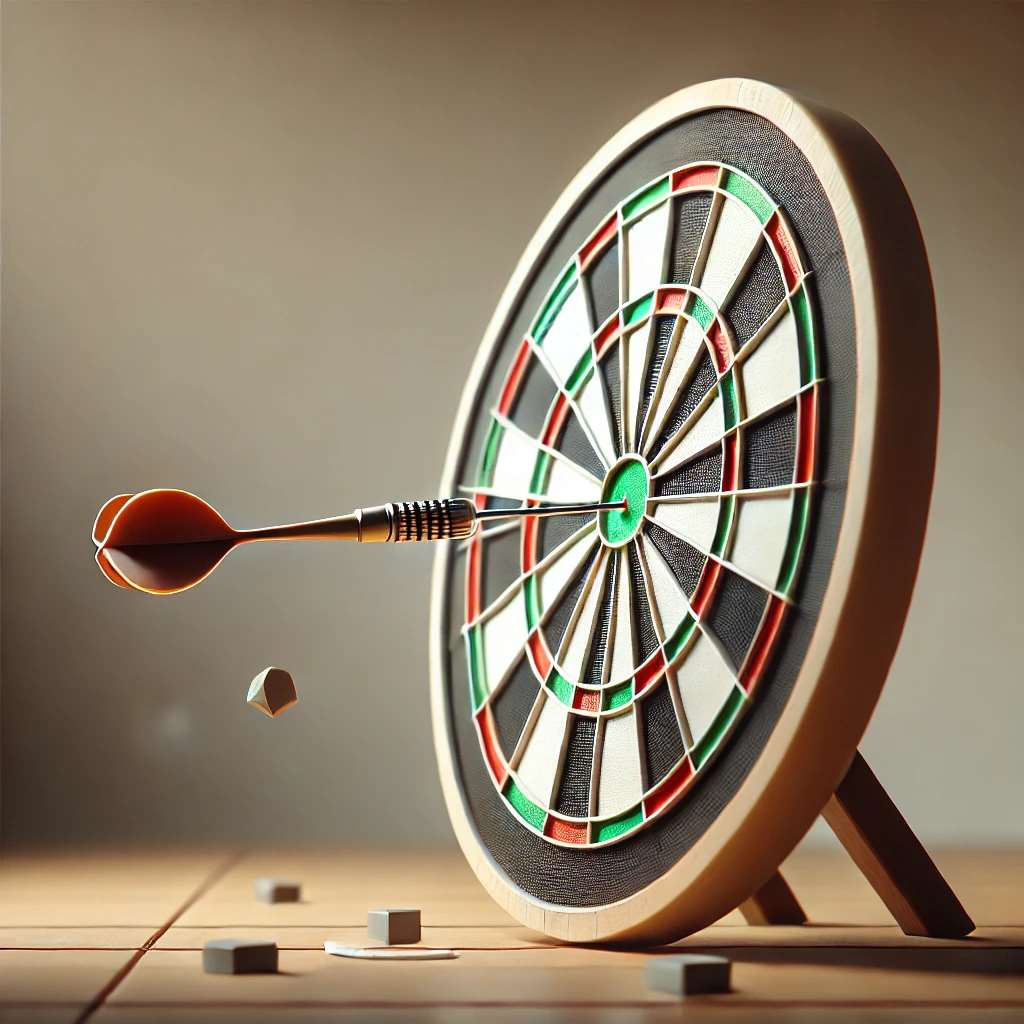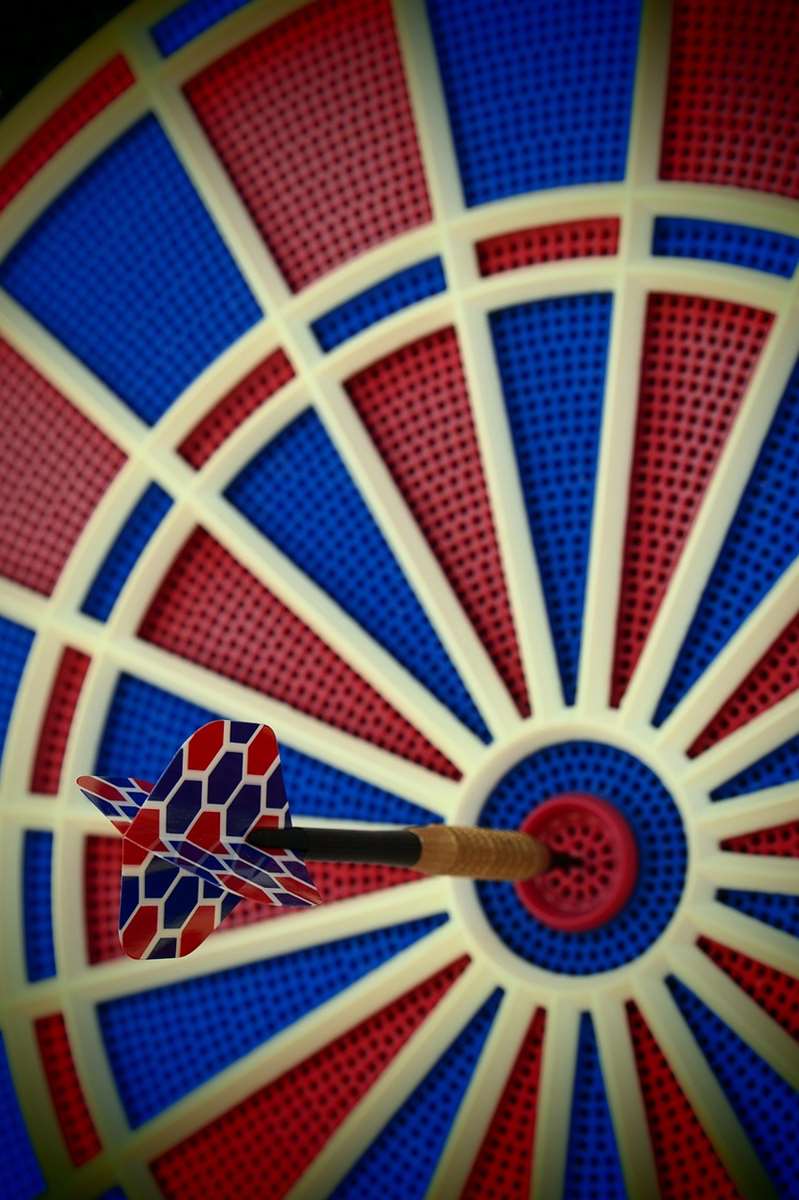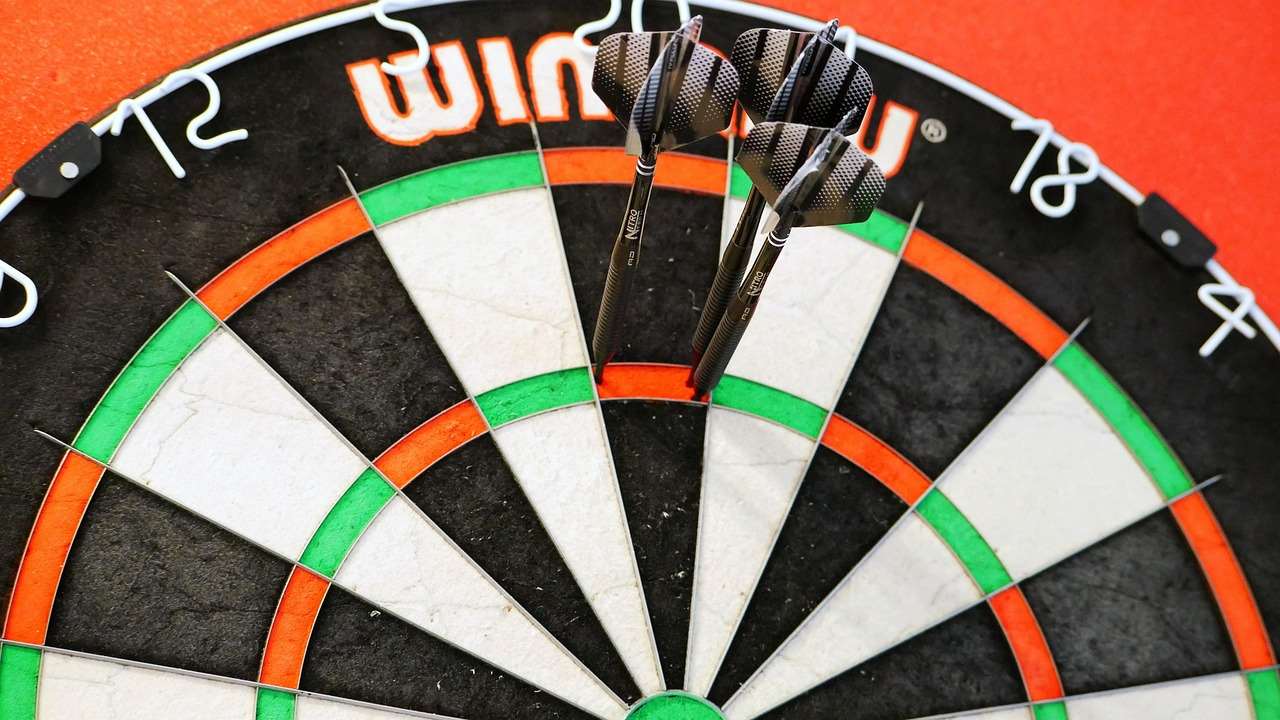Want to become a more accurate and versatile darts player? This master guide to all Around the Clock darts variations unlocks the secrets to mastering this classic practice game and its many exciting twists. We’ll cover standard rules, scoring adjustments, team play, and handicap options, transforming your practice sessions into engaging skill-building experiences.
⚠️ Still Using Pen & Paper (or a Chalkboard)?! ⚠️
Step into the future! The Dart Counter App handles all the scoring, suggests checkouts, and tracks your stats automatically. It's easier than you think!
Try the Smart Dart Counter App FREE!Ready for an upgrade? Click above!
Master Guide to All Around the Clock Darts Variations: The Core Game
The foundation of any **Around the Clock darts** game is simple: hit each number on the dartboard, in order, from 1 to 20. Sounds easy, right? But the pressure of hitting specific targets, especially under the watchful eyes of your friends (or rivals), can quickly expose weaknesses in your game. This Master guide to all Around the Clock darts variations starts with the core rules.
- Objective: Be the first player to successfully hit every number from 1 to 20 in sequential order.
- Gameplay: Players take turns throwing three darts per round.
- Progression: A player must hit the current number in sequence to advance to the next. If they miss, they must attempt the same number on their next turn.
- Winning: The first player to hit the 20th number wins the game.
This version hones your accuracy and concentration. Consider it your darting boot camp! You might want to start with Basic Darts Fundamentals for Beginners to get a good foundation.

Spice It Up: Around the Clock Variations
Once you’ve mastered the basic game, it’s time to explore the many exciting variations. These tweaks add layers of complexity, forcing you to adapt your strategy and throwing technique. Let’s dive into how to make darts fairer with handicap rules.
Doubles Only Around the Clock
This variation takes the difficulty up a notch. Now, you must hit the **double** of each number in sequence. This demands pinpoint accuracy and dramatically increases the challenge. Good for practicing those crucial double finishes!
Trebles Only Around the Clock
Even harder than doubles, this version requires you to hit the **treble** of each number. This is a true test of precision and is excellent for improving your grouping skills. It’s not for the faint of heart!
Bullseye Start Around the Clock
Instead of starting at 1, players must first hit the **bullseye** before progressing to the number 1. This can be a quick and exciting variation, especially for players who excel at hitting the center of the board.
Reverse Around the Clock
Start at 20 and work your way down to 1. This might seem simple, but the change in perspective can throw you off. It’s a great way to challenge your muscle memory and improve your adaptability. We can also look at Modifying rules for mixed-level dart players to spice this up even more.
Odd/Even Around the Clock
Play only the odd numbers (1, 3, 5…) or only the even numbers (2, 4, 6…). This shortens the game and can be a fun way to introduce beginners to **Around the Clock**. Another good variation to use while Adapting dart game rules for children.

Team Play: Around the Clock with Partners
Turn **Around the Clock darts** into a social event by playing with partners. Team play adds a strategic element and encourages collaboration. You could even organize creative dart rules for parties and social gatherings!
Alternating Shots
Partners alternate throwing darts. For example, one partner throws the first dart of the round, and the other throws the remaining two. This requires communication and coordination.
Combined Score
Partners combine their scores for each round. If one partner hits the required number and the other misses, they still progress to the next number.
“Help Me Out” Rule
If a player misses the required number, their partner can attempt to hit it on their next turn. This encourages teamwork and provides a safety net for less experienced players. Think about Fun dart game variations with modified rules to increase the level of challenge.
Handicap Options for Fair Play
**Around the Clock** can be easily adapted to accommodate players of different skill levels. Handicap systems ensure that everyone has a fair chance of winning, making the game more enjoyable for all. Here are some considerations for alternative darts rules for home play.
Starting Point Handicap
More skilled players can start at a higher number, while less experienced players start at 1. For example, a strong player might start at 5 or 10, giving their opponent a head start.
“Miss” Handicap
Weaker players can be given a certain number of “misses” per game. This means they can miss the required number and still progress to the next. For instance, a player with a “2 miss” handicap can miss two numbers throughout the game without penalty.
Extra Darts
Less skilled players could be allowed an extra dart or two per turn. This gives them more opportunities to hit the target and progress through the game. Think about Adapting darts rules for small spaces: tips and tricks to further level the playing field.

Advanced Strategies for Around the Clock Darts
Beyond the basic rules and variations, mastering **Around the Clock** requires strategic thinking and a keen understanding of your own strengths and weaknesses. This is especially true when Simplified 501 game rules for novice players becomes too repetitive.
Target Prioritization
On some numbers, the target is fairly isolated (like 1, 5, and 20). On others, it is surrounded by high-scoring numbers (like 19 next to 3 and 7). Learn to prioritize throws to minimize the risk of accidentally hitting a high-scoring number. If you are on 19, throw away from the treble!
Mental Game
Don’t let misses get you down. Maintain a positive attitude and focus on the next throw. Visualize success and believe in your ability to hit the target. The mental aspect of darts is just as important as the physical.
Practice Drills
Incorporate **Around the Clock** into your regular practice routine. Focus on specific numbers that you struggle with, and track your progress over time. This focused practice will pay off in improved accuracy and consistency. Mastering the Basic Darts Fundamentals for Beginners is also helpful.

Equipment Matters: Dartboard and Darts
To get the most out of your **Around the Clock** practice, it’s essential to have the right equipment. A high-quality dartboard and well-balanced darts can significantly improve your performance. Having the right environment is crucial.
Dartboard Quality
Invest in a sisal fiber dartboard. These boards are self-healing and will last much longer than cheaper alternatives. Rotate the board regularly to distribute wear evenly.
Dart Weight and Grip
Experiment with different dart weights and grips to find what works best for you. A comfortable and consistent grip is crucial for accuracy. Consider attending workshops to get a feel for the correct throw.
Dart Maintenance
Keep your darts in good condition. Sharpen the points regularly to ensure they stick in the board properly. Replace damaged flights and stems as needed. Taking care of your equipment will help you maintain consistent throws.
Tracking Your Progress
The **Master guide to all Around the Clock darts variations** wouldn’t be complete without a discussion on tracking your performance! Keeping track of your scores and progress is essential for identifying areas for improvement and staying motivated.
Scorecards
Use a scorecard to record your scores for each game. Note your averages, high scores, and any patterns you notice. Track your throws.
Spreadsheets
For more detailed analysis, create a spreadsheet to track your progress over time. This will allow you to identify trends and see how you are improving in specific areas.

Conclusion: Level Up Your Dart Game
This Master guide to all Around the Clock darts variations provides a comprehensive overview of this versatile and engaging practice game. By mastering the core rules, exploring different variations, and implementing strategic practice techniques, you can significantly improve your accuracy, consistency, and overall darting skills. So, grab your darts, gather your friends, and start playing! Now, put these tips into practice and share your progress with other players online. Consider joining a local darts league to continue honing your skills and connecting with fellow enthusiasts.
Hi, I’m Dieter, and I created Dartcounter (Dartcounterapp.com). My motivation wasn’t being a darts expert – quite the opposite! When I first started playing, I loved the game but found keeping accurate scores and tracking stats difficult and distracting.
I figured I couldn’t be the only one struggling with this. So, I decided to build a solution: an easy-to-use application that everyone, no matter their experience level, could use to manage scoring effortlessly.
My goal for Dartcounter was simple: let the app handle the numbers – the scoring, the averages, the stats, even checkout suggestions – so players could focus purely on their throw and enjoying the game. It began as a way to solve my own beginner’s problem, and I’m thrilled it has grown into a helpful tool for the wider darts community.